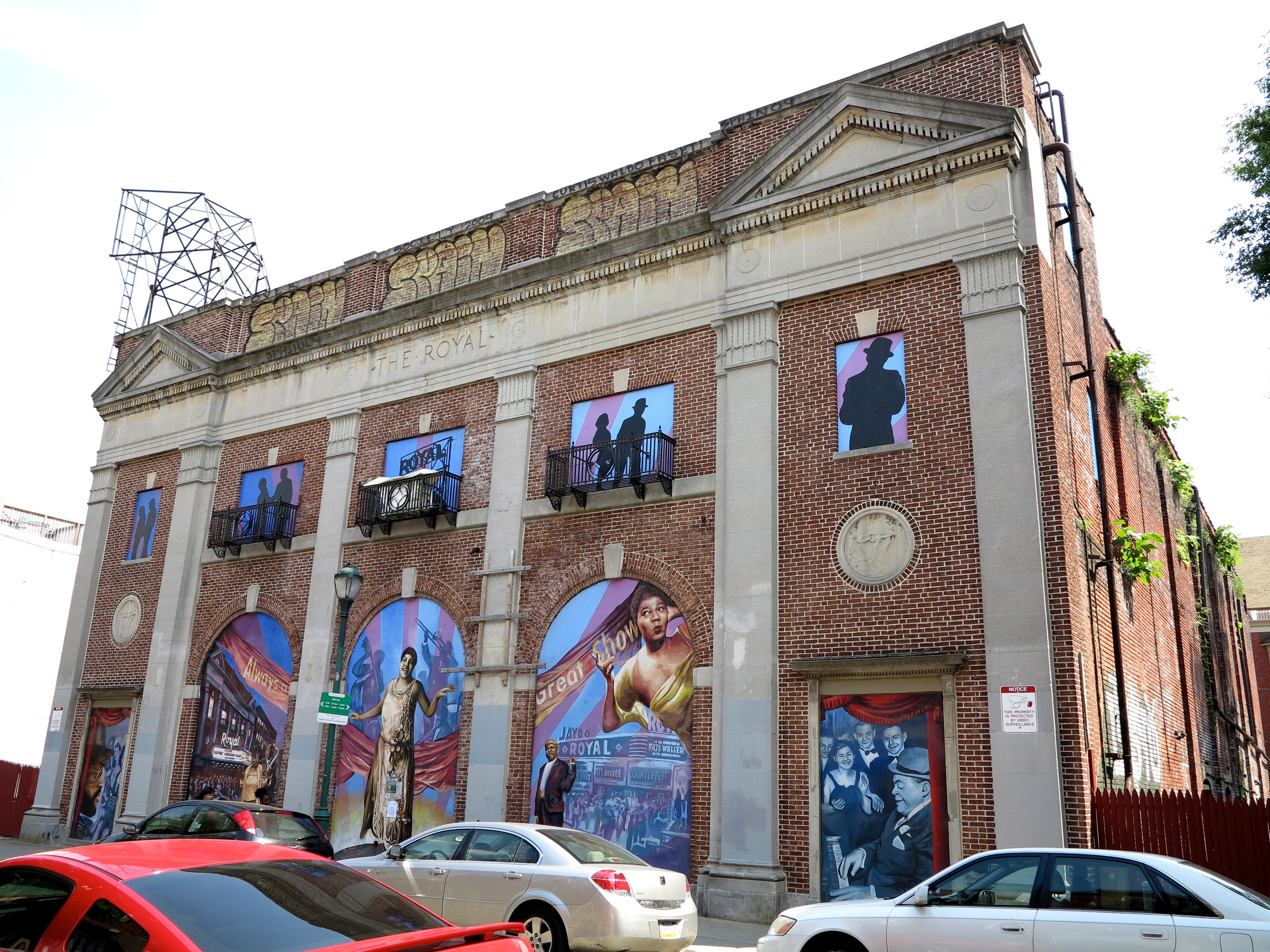Royal redevelopment plans advancing, facadism and density ahead

We may never know what the Royal Theater could become. Redevelopment proposals, floated around for more than a year, do not envision a reuse for the deteriorating landmark on South Street. The current concept would demolish all but the theater’s restrained Classical Revival façade, which would instead be used as an ornament to dress up a new mixed-use building constructed behind it.
The Royal Theater is a vacant icon from a bygone era of black entertainment – a jazz age performance venue and a first run movie theater catering to black audiences – just a few years shy of its 100th birthday. The Royal closed in the 1970s, was gutted years ago, and has languished despite hopes for reuse. Universal Companies has owned the Royal since 2000 and done little to improve its condition. Last year Universal announced plans to redevelop the property and an adjacent vacant lot to build a new mixed-use building. Developer Carl Dranoff has partnered with Universal for the project.
After nearly a year of silence, Dranoff and architect Daryl Carrington from the firm JDavis Architects presented a new development scheme at a South of South Neighborhood Association meeting on September 10. Their proposal envisions a new mixed-use anchor for this stretch of South Street. Details include:
- Demolition of all but the Royal’s facade
- Construction of new building about 50 feet tall
- 45 “high-end” rental apartment units
- 21 below-grade parking spaces accessed from a 20-foot wide garage entry on Kater Street.
- 7,600 square feet of retail on South Street, 55-feet deep in a double-height space
- Restoration of historic façade, with new structure behind articulated to defer to the original
- Nearly full lot coverage
- Green roofs at 3rd floor
- Kater Street façade will resemble six tall rowhouses, with stoops, bays and setbacks at the top floor terraces
The presentation was a courtesy update for neighbors about current plans, and the development team fielded a few questions. (SOSNA intends to review the plan further as it develops, so there will be more opportunities for discussion going forward.) After plans are firmed up the project will require several layers of approval in order to advance.
Dranoff does not intend to ask for zoning variances, and therefore will not need to go before the Zoning Board of Adjustment. Instead Dranoff intends to pursue a legislative rezoning for the property, with a bill introduced at City Council tailored specifically for this development. Dranoff argued that this means of zoning approval offers more certainty to the community about what may be built.
The only reason the Royal is still standing, or even getting the proposed façadectomy, is because there are three significant (though not insurmountable) preservation hurdles that the developers must clear.
The Preservation Alliance for Greater Philadelphia holds a façade easement on the building, which means any plans to alter or restore the façade require the Alliance’s approval. The Pennsylvania Historical and Museum Commission will also need to consent to any alterations or demolition thanks to a restrictive covenant placed on the property’s deed in exchange for grant funding awarded to Universal in 2008 to stabilize the building. Finally, because the building is designated historic locally, the Philadelphia Historical Commission would also have to grant a hardship, for which the owner previously filed an application. [Update 9/16/14: Universal submitted hardship applications to the Philadelphia Historical Commission in 2012 and 2013. The commission rejected both applications as incomplete and there is no hardship application pending.]
At last week’s meeting Dranoff described these preservation restrictions as something “we are hoping to get past.” He also called them “a real burden on the building,” noting that façade restoration would be costly.
If all of fuss about the facade seems strange, it’s really because that piece of the building has the most protection. At a public meeting last year a representative from Universal contended that means only the first 12 inches of brick that are significant, but that’s a misunderstanding. People care about the Royal, less for its architectural elements and more because it is a vessel for an important piece of Philadelphia’s cultural history. Raze the Royal and its story will be as ghostlike as the jazz stars like Cab Calloway or Bessie Smith who once graced its stage. Reduce that heritage to 12 inches of brick and we’re missing the point.
Some neighbors told Dranoff they’re willing to wait for a reuse of the historic building, but others see this proposal as an opportunity to seize as this stretch of South Street grows stronger and more desirable.
PlanPhilly has requested project renderings presented at last week’s meeting and will publish them should Dranoff Properties provide them.
WHYY is your source for fact-based, in-depth journalism and information. As a nonprofit organization, we rely on financial support from readers like you. Please give today.





